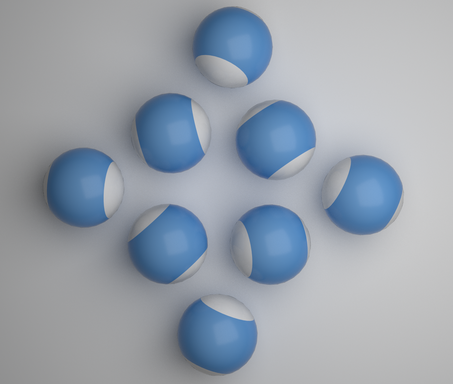Fundamental Studies of Colloidal and Molecular Clusters
Self-assembling structures are ubiquitous in nature; the delicate dance of functional protein and nucleic acid macromolecules invites folding and binding into structures which make life possible. These self-assembled structures may be thermodynamically stable, or only kinetically stable, as is the case for many proteins. Under the addition of salt, acid, or heat, kinetic barriers are removed, and the molecules will denature, transition to a lower free energy state, and lose their intended function. Everyday examples of this delicate balance abound in the kitchen, such as the setting of gelatin and the making of cheeses. There is also widespread medical importance, as subtle effects in protein morphology lead to aggregation into fibrils connected to a wide variety of diseases.
In the nascent discipline of molecular engineering, such structures are designed from the top down using molecular and macromolecular constituents. The resulting structures may, as with proteins, be kinetically or thermodynamically stable. The Whitmer group is interested in using principles of molecular interactions and free energy mapping to design bespoke structures at the meso- and nano-scales. This work is currently focused on studying the kinetics and thermodynamics of colloidal assembly at the microscale, and determining methods by which the free energy surface may be tilted, selecting new assembly pathways and stable states with an eye toward creating robust, open assemblies.
